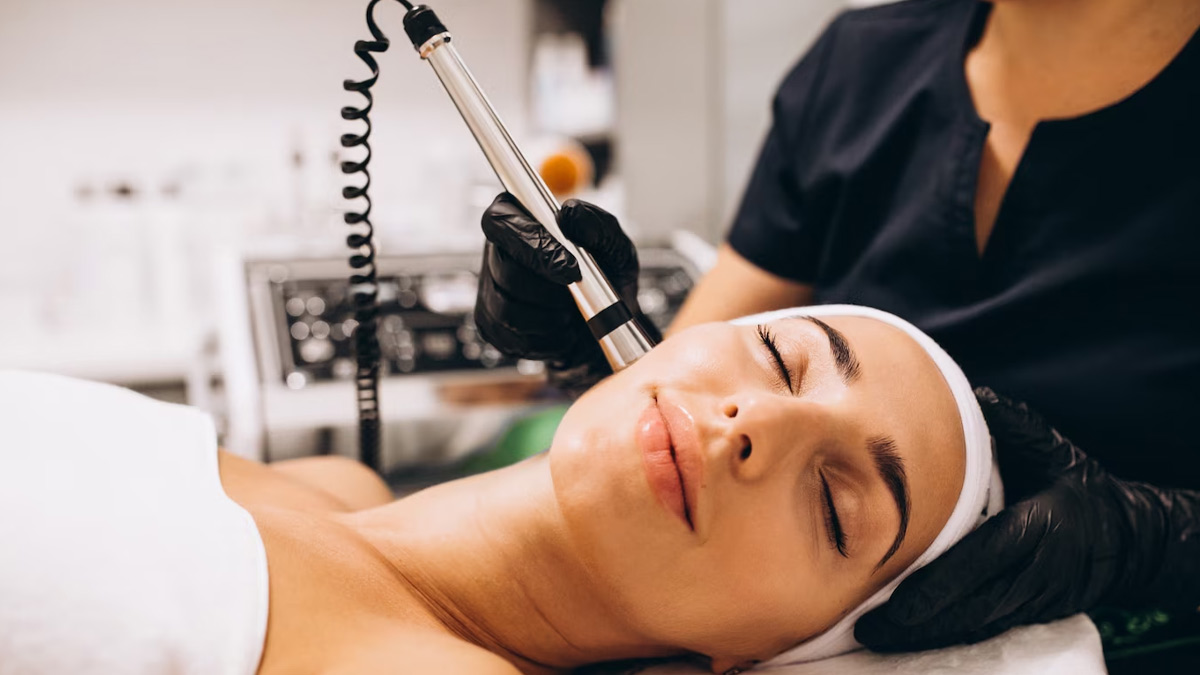
Microdermabrasion is a cosmetic procedure that removes the outer layer of skin, known as the stratum corneum, to improve skin texture and appearance.
It is a non-surgical procedure that uses a handheld device to exfoliate the skin with a fine stream of crystals. The instrument also vacuums away the exfoliated skin cells, revealing the softer, smoother layer beneath.
Table of Content:-
Process Of Microdermabrasion
The Food and Drug Administration first approved microdermabrasion in 1996. Hundreds of microdermabrasion devices have been manufactured since then.
The process is fairly straightforward and can be performed by a dermatologist or aesthetician. First, the skin area to be treated is cleansed with a gentle cleanser. This helps remove any dirt, oil, and makeup that may be present on the skin. Next, a diamond-tipped wand is used to exfoliate the skin gently. The rod is moved in circular motions across the skin, removing dead skin cells and revealing the brighter, healthier skin beneath.
Also read: 7 Reasons To Add Face Serum To Your Skincare
After the initial exfoliation, a moisturising cream or serum may be applied to the skin to help soothe and hydrate the newly treated area. Depending on the severity of the skin issue being treated, the dermatologist or aesthetician may recommend a series of treatments to be done

Side Effects Of Microdermabrasion
Like any other cosmetic procedure, microdermabrasion has certain side effects. These can vary depending on the person and their skin type, but some of the most common side effects include:
Redness and swelling
Immediately after the procedure, patients may experience redness and swelling in the area that was treated. This is to be expected and should subside within a few hours.
Skin irritation
Some people may experience skin irritation, itching, burning, or stinging. This should also subside within a few hours after the treatment.
Scarring
In rare cases, microdermabrasion can cause scarring. This is more likely to occur if the device is used improperly or the area treated is too sensitive.
Infection
If the procedure is not performed correctly, bacteria can spread and cause an infection. This is why ensuring the equipment is clean and sterile is important.
Pigment Changes
While rare, there is a risk of pigment changes in the area treated. This is more likely to occur in people with darker skin tones.
Also read: 7 Natural Ways To Deal With Large Skin Pores
Talking to your doctor about any side effects you may experience after a microdermabrasion treatment is important. If any of these symptoms persist or worsen, seeking medical attention is important.

Takeaway
Microdermabrasion is often used to treat common skin issues such as acne, wrinkles, sun damage, and age spots. It can also reduce the appearance of scars, including those from burns or chickenpox. It is important to note that microdermabrasion can increase the skin's sensitivity to the sun, so patients should use sunscreen outdoors.
Overall, microdermabrasion is a safe and effective way to improve the appearance and texture of the skin. It is important to consult a dermatologist before the procedure to ensure it is the best option for you.
Image credit- FreePik
Also watch this video
How we keep this article up to date:
We work with experts and keep a close eye on the latest in health and wellness. Whenever there is a new research or helpful information, we update our articles with accurate and useful advice.
Current Version